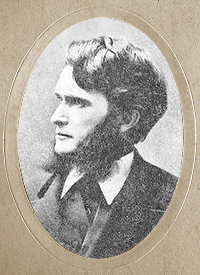God Be with You till We Meet Again
God be with you till we
meet again;
By His counsels guide, uphold you,
With His sheep securely fold you;
God be
with you till we meet again.
God be with you till we meet again;
Neath His
wings protecting hide you;
Daily manna still provide you;
God be with you till we meet
again.
God be with you till we meet again;
When
life’s perils thick confound you;
Put His arms unfailing round you;
God be with
you till we meet again.
God be with you till we meet
again;
Keep love’s banner floating o’er you,
Strike death’s
threatening wave before you;
God be with you till we meet again.
Chorus
Till we meet, till we meet,
Till
we meet at Jesus’ feet;
Till we meet, till we meet,
God be with you
till we meet again.
BIBLE
REFERENCE:
And, lo, I am with you alway, even unto the end of
the world. Amen.
Matthew 28:20
The grace of our Lord Jesus Christ be with you
all. Amen
Romans 16:24
The grace of our Lord Jesus Christ be with you. My
love be with you all in Christ Jesus. Amen
1 Corinthians 16:24-25
The grace of the Lord Jesus Christ, and the love
of God, and the communion of the Holy Ghost, be with you all.
2 Corinthians 13:14
The Lord Jesus Christ be with thy spirit. Grace be
with you. Amen
2 Timothy 4:22
The grace of our Lord Jesus Christ be with your
spirit. Amen.
Phi lemon 1:25
Then we which are alive and remin shall be caught
up together with them in the clouds, to meet the Lord in the air: and so shall we ever be with
the Lord. 1
Thessalonians 4:17
My sheep hear my voice, and I know them, and they
follow me: And I give unto them eternal life; and they shall never perish, neither shall any man
pluck them out of my hand. My Father, which gave them me, is greater than all; and no man is
able to pluck them out of my Father's hand.
John 10:27-29
Jeremiah Eames Rankin -
Lyrics
1828-1904
Born: January 2, 1828, Thornton, New Hampshire.
Died: November 28, 1904, Cleveland, Ohio.
Buried: Lake View Cemetery, Cleveland, Ohio.
Walter Stillman Martin -
Composer
1833-1896
Born: October 5, 1833.
Died: September 26, 1896, New Jersey.
Buried: Union Cemetery, Finesville, New Jersey.
HYMN
HISTORY:
This popular benediction hymn along with “Blest
Be the Tie That Binds” has been sung at the close of more Church Services over the past 100
years than any other hymns combined.
“God Be with You till We Meet Again” was written and published, in 1882, by the Reverend
Jeremiah Eames Rankin, who was, at the time, pastor of the First Congregational Church of Washington
D.C.
The poem that Rankin originally wrote had eight stanzas, but today the first, second, fourth and
seventh stanzas are all that are commonly sung.
Jeremiah Rankin was born in Thornton, New Hampshire, on January 2, 1828. He was a graduate of
Middlebury College in Vermont and received his theological training at the Andover Theological
Seminary in Massachusetts.
Dr. Rankin severed as pastor of several prominent congregational churches in New England and
Washington D.C. until 1889, when he became president of Howard University, Washington D.C. Dr.
Rankin was also known as a powerful and effective preacher;
and attracted large crowds, not only with his speaking, but also with his emphasis on congregational
singing, especially in his evangelistic, Sunday evening services.
Mr Rankin has left the following account regarding the writing of “God Be With
You”:
"Written as a Christian good-bye, it
was called forth by no person or occasion, but was deliberately composed as a Christian hymn on
the basis of the etymology of “good-bye,”
which is “God be with you.” I consulted the dictionary for the definition of the
word 'good-bye', and found it to be a contraction of 'God be with ye'. Very soon the first verse
was completed. The first stanza was written and sent to two composers—one of unusual note,
the other wholly unknown and not thoroughly educated in music. I selected the composition of the
latter, submitted it to J. W. Bischoff—the musical director of a little book we were
preparing—who approved of it, but made some criticisms, which were adopted.
It was sung for the first time one evening in the First Congregational Church in Washington, of
which I was then the pastor and Mr. Bischoff the organist. I attributed its popularity in no
little part to the music to which it was set. It was a wedding of words and music,
at which it was my function to preside; but Mr. Tomer should have his full share of the family
honor."
William Gould Tomer was born on October 5,
1833. He severed in t he Union Army during the Civil War and the became a public school teacher in
New Jersey. When he composed the music for this text upon Dr. Rankin’s request,
he was serving as music director at the Grace Methodist Episcopal Church in Washington D.C. Later,
he returned to New Jersey, where he spent his remaining years teaching school. This hymn was sung at
his own funeral, in 1896.
“God Be With You” was widely used in the Moody and Sankey meetings throughout North
America and England, it also became the “Official” closing song for the Christian
Endeavor Conventions around the world and as such was translated into many different
languages.
Dear Brothers and Sisters
in Christ,
No finer farewell can be expressed by Christians to one another as they leave a place of worship
than, “God be With You till we meet again." The First verse of this hymn expresses to
them that by God's counsel He will guide them,
(John 16:13)
, and uphold them securely in His fold
(John 10:27-29)
. The Second verse tells them of God's
protection
(Psalms 91:3-7)
, and His providing them their daily provisions
(John 6:31-35)
. The Third verse tells them of God's protection
though the perils of life
(Psalm 59:16)
. The Fourth verse tells them of God's protection in
the face of Death
(Psalms 23)
. As with many other Christian expressions "God
be With You" has been abbreviated to the phrase "Good-bye" and its blessed meaning is lost.
This Lord's Day as you depart from fellow believers leave them with these blessed words, "God
be with You till we meet again."






